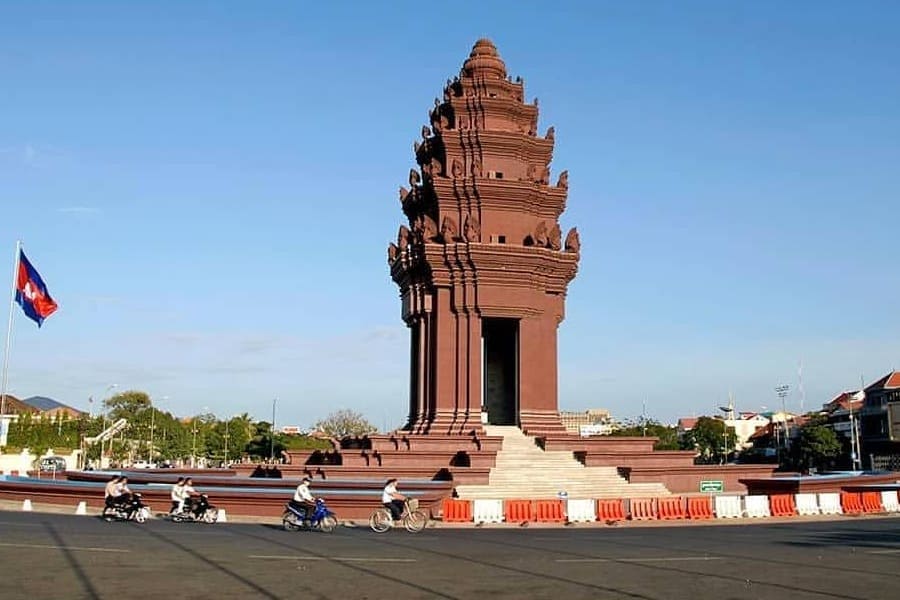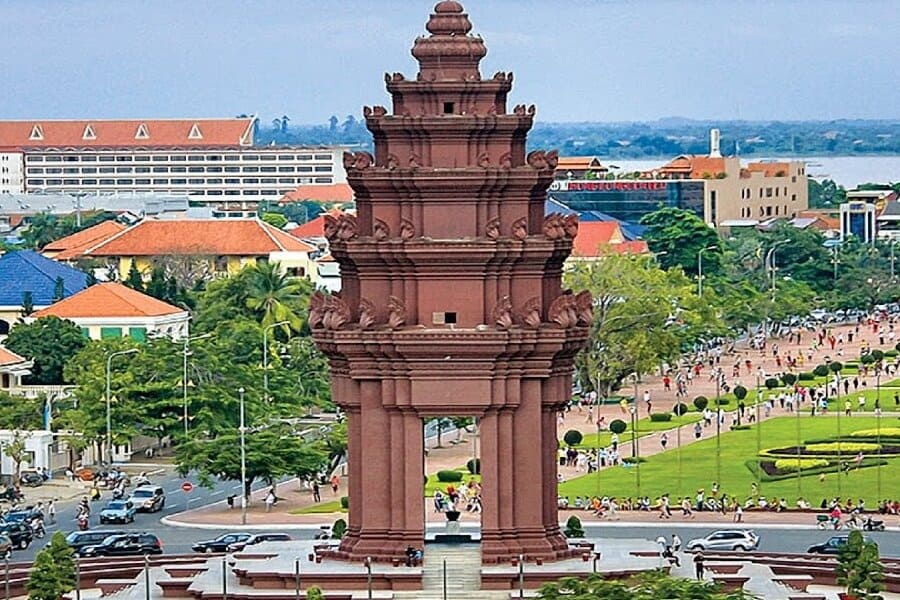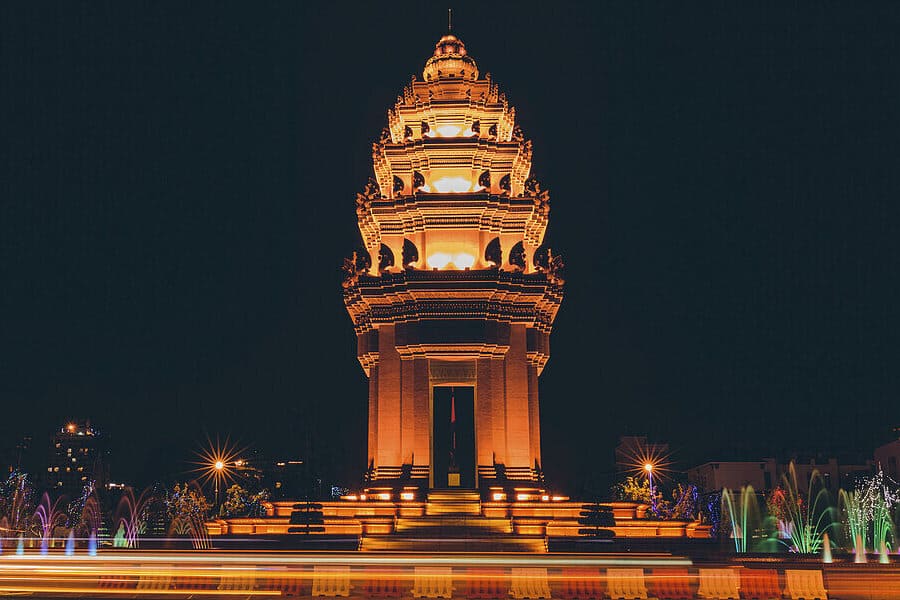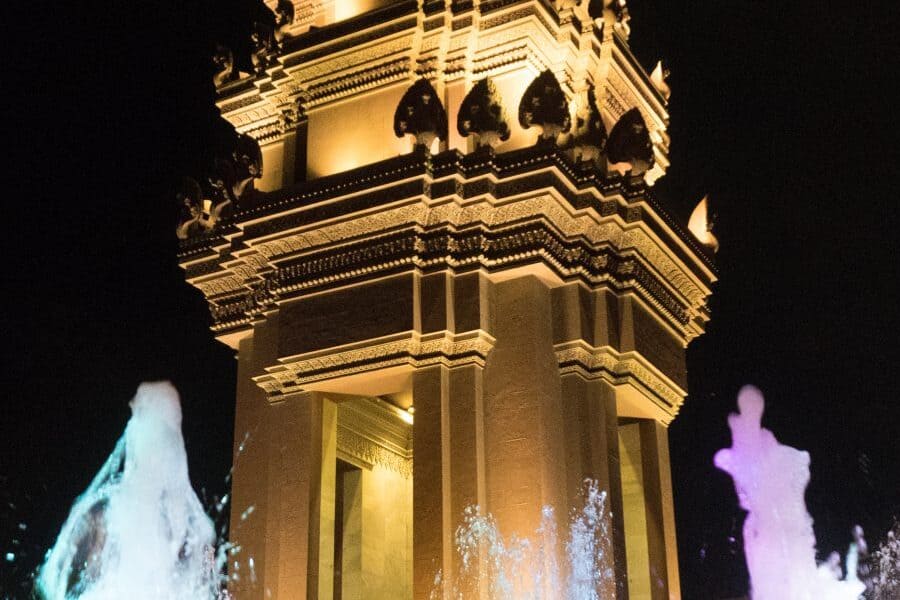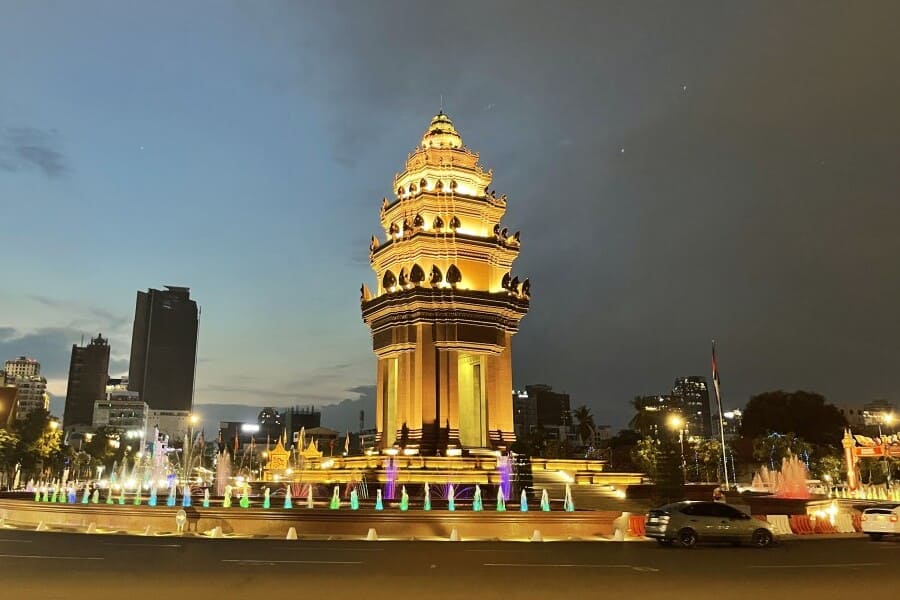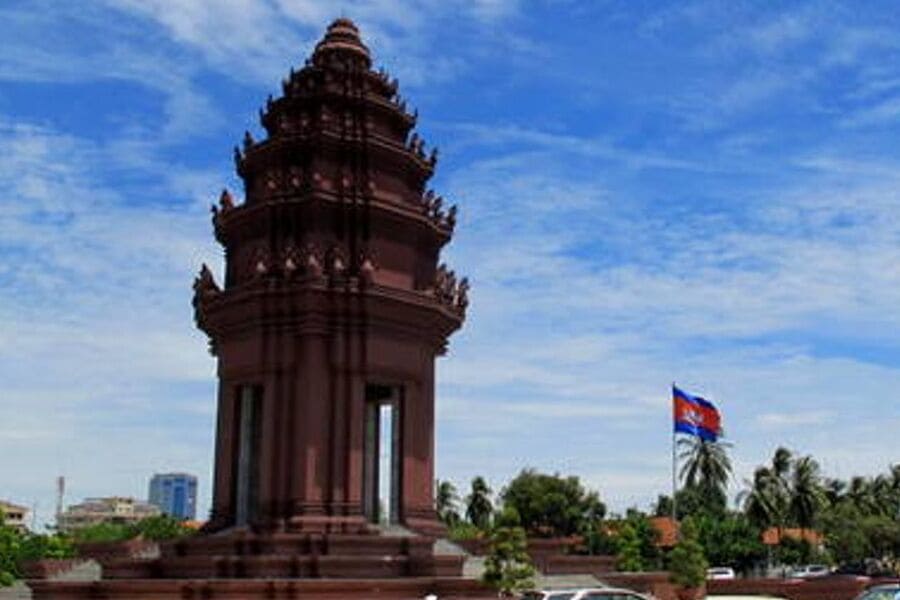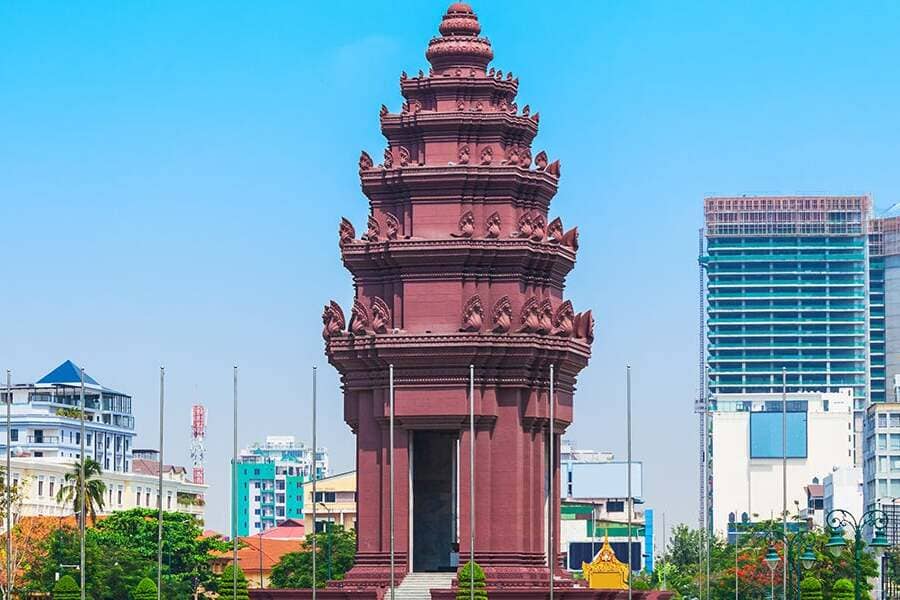During your Cambodia vacations, don't miss the Independence Monument in Phnom Penh. This iconic structure stands proudly as a symbol of Cambodia's independence from French colonial rule. Located in the heart of the city, the monument is especially striking at night when illuminated, offering a poignant reminder of Cambodia's history and national pride. Surrounding the monument are lovely parks and boulevards, making it a pleasant spot for a stroll and a must-visit landmark for tourists exploring Phnom Penh's cultural and historical attractions.
Contents
The history of the Independence Monument
The history of the Independence Monument is deeply rooted in Cambodia's struggle for freedom and self-determination. Constructed to commemorate the country's independence from French colonial rule, the monument stands as a powerful symbol of national sovereignty and pride.
Following decades of French colonial administration, Cambodia's quest for independence gained momentum in the mid-20th century. Under the leadership of King Norodom Sihanouk and Prime Minister Norodom Sihanouk, the Cambodian people rallied for self-rule and autonomy.
On November 9, 1953, Cambodia achieved independence from France, marking a significant milestone in the nation's history. To commemorate this historic event, plans were set in motion for the construction of the Independence Monument.
Designed by renowned Cambodian architect Vann Molyvann, the Independence Monument's architecture reflects a blend of traditional Khmer design elements and modernist influences. Construction of the monument began in 1958 and was completed in 1962, with the monument officially inaugurated on November 9th, the anniversary of Cambodia's independence.
The Independence Monument stands as a timeless tribute to Cambodia's resilience and determination in the face of colonial oppression. Over the years, it has served as a focal point for national celebrations, ceremonies, and gatherings, hosting events that honor the sacrifices of those who fought for freedom.
Today, the Independence Monument stands as a cherished symbol of Cambodia's independence and national identity. It serves as a reminder of the nation's past struggles and triumphs, inspiring future generations to uphold the values of freedom, unity, and solidarity.
The architectural features of the Independence Monument
The architectural features of the Independence Monument in Phnom Penh are a captivating blend of traditional Khmer design and modernist influences, creating an iconic structure that stands as a symbol of Cambodia's sovereignty and resilience.
At the heart of the monument is a towering spire, reaching skyward with graceful lines and intricate detailing. This central spire is adorned with intricate bas-reliefs depicting scenes from Cambodia's history and mythology, paying homage to the nation's rich cultural heritage. Surrounding the spire are stylized motifs and decorative elements, including the iconic Naga serpent heads, which hold symbolic significance in Cambodian culture.
The monument's design reflects a harmonious fusion of Khmer architectural traditions and contemporary aesthetics, with clean lines, geometric shapes, and bold sculptural forms. Constructed from reinforced concrete and clad in gleaming white marble, the Independence Monument exudes a sense of strength and permanence, standing as a testament to Cambodia's enduring spirit.
Surrounded by manicured gardens and illuminated by night, the monument creates a striking contrast against the backdrop of Phnom Penh's skyline. Its serene surroundings offer a tranquil retreat amidst the bustling cityscape, inviting visitors to pause, reflect, and pay tribute to the nation's past struggles and triumphs.
As a cherished symbol of Cambodia's independence and national identity, the Independence Monument continues to inspire awe and reverence among locals and tourists alike. Its architectural beauty and historical significance make it a must-see destination for anyone seeking to explore Cambodia's rich cultural heritage and commemorate its journey towards freedom and self-determination.
The symbolism and cultural significance of the Independence Monument
The Independence Monument in Cambodia holds profound symbolism and cultural significance, serving as a powerful reminder of the nation's hard-won independence from French colonial rule and its enduring commitment to sovereignty, freedom, and national identity.
- Symbol of Freedom: The monument stands as a towering symbol of freedom and self-determination, commemorating Cambodia's liberation from colonial oppression on November 9, 1953. Its construction represents a triumph of the Cambodian people's resilience and determination to forge their own destiny.
- National Pride: The Independence Monument instills a sense of national pride and unity among Cambodians, symbolizing the collective sacrifices and struggles endured by past generations to secure the nation's independence. It serves as a source of inspiration and empowerment for future generations, reminding them of their inherent strength and resilience.
- Cultural Heritage: Architecturally, the monument embodies Cambodia's rich cultural heritage and architectural tradition. Designed by renowned Cambodian architect Vann Molyvann, its elegant spire and intricate bas-reliefs pay homage to the country's ancient Khmer civilization and artistic legacy.
- Gathering Place: The monument serves as a focal point for national celebrations, ceremonies, and gatherings, bringing together people from all walks of life to commemorate important events in Cambodia's history. It is a symbol of solidarity and unity, fostering a sense of community and shared purpose among Cambodians.
- Remembrance and Reflection: The Independence Monument serves as a site of remembrance and reflection, honoring the sacrifices of those who fought for freedom and justice. It provides a space for contemplation and introspection, allowing visitors to connect with the nation's past and contemplate its future.
Practical information for visitors when visiting the Independence Monument
For visitors planning to explore the Independence Monument in Cambodia, here's some practical information to ensure a smooth and enjoyable experience:
- Location: The Independence Monument is located at the intersection of Norodom Boulevard and Sihanouk Boulevard in the heart of Phnom Penh, the capital city of Cambodia. It is easily accessible by various modes of transportation, including tuk-tuks, taxis, and public buses.
- Opening Hours: The Independence Monument is an outdoor monument and is accessible to visitors at all hours of the day and night. However, it is recommended to visit during daylight hours to fully appreciate its architectural details and surrounding gardens.
- Admission: There is no admission fee to visit the Independence Monument, as it is a public monument and open to all visitors free of charge.
- Dress Code: While there is no strict dress code enforced at the Independence Monument, visitors are advised to dress modestly out of respect for the cultural significance of the site. This may include avoiding revealing clothing and covering shoulders and knees.
- Etiquette: When visiting the Independence Monument, visitors are encouraged to observe proper etiquette and behavior. This includes refraining from climbing on the monument, littering, or engaging in disruptive behavior. Photography is allowed, but be respectful of other visitors and avoid disturbing those who are paying their respects.
- Safety: The area surrounding the Independence Monument is generally safe for visitors, but it's always wise to remain vigilant and keep an eye on your belongings, especially in crowded areas. Be cautious when crossing the nearby streets, as traffic in Phnom Penh can be busy and unpredictable.
How to get to the Independence Monument?
- By Tuk-Tuk or Taxi: The most convenient way is to hire a tuk-tuk or taxi. Tuk-tuks are a popular mode of transport in Phnom Penh and can be found throughout the city. Taxi services are also available and can be hailed or arranged through hotels.
- By Walking: If you're staying in central Phnom Penh, particularly near the Riverside area or along Norodom Boulevard, the Independence Monument is within walking distance. It's located at the intersection of Norodom Boulevard and Sihanouk Boulevard, making it accessible by foot if you enjoy walking.
- Public Bus: Public buses in Phnom Penh are not commonly used by tourists, but there are local bus routes that pass by the Independence Monument area. You may need to inquire locally or ask at your accommodation for specific bus routes and stops.
- Motorbike or Bicycle: For those comfortable riding motorcycles or bicycles, you can rent one and navigate the city streets to reach the Independence Monument. Motorbike rentals are available at various shops and guesthouses in Phnom Penh.

